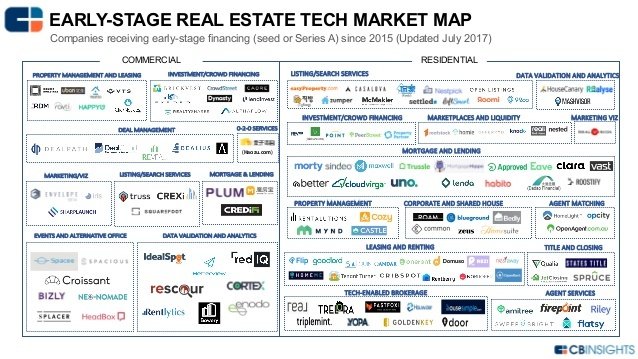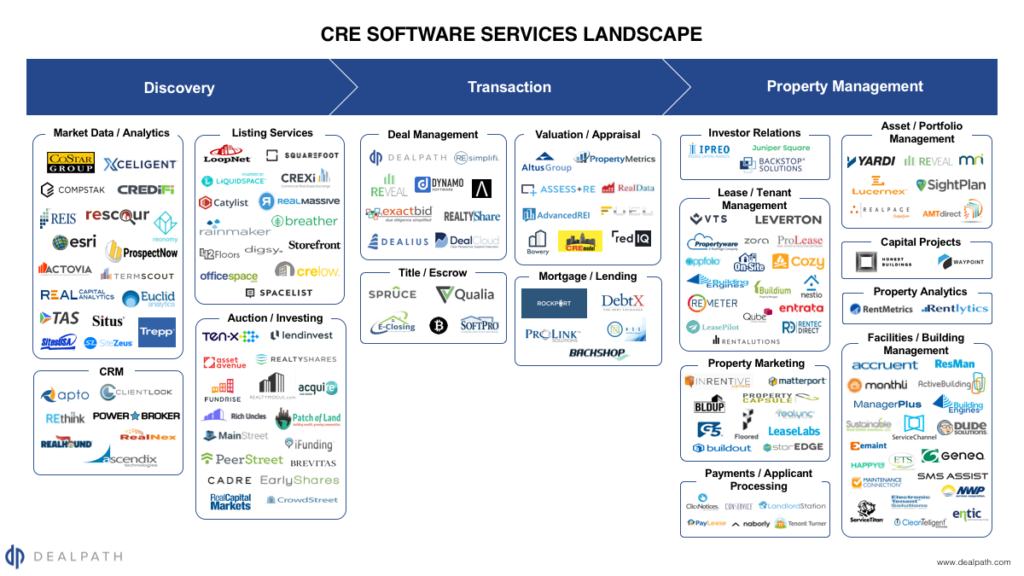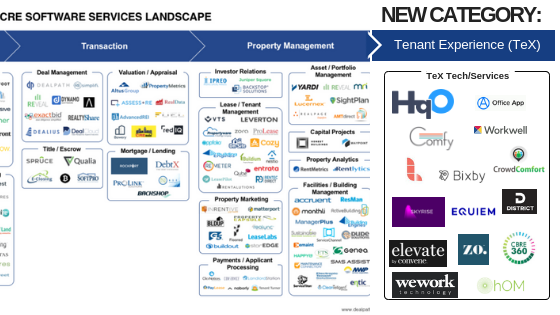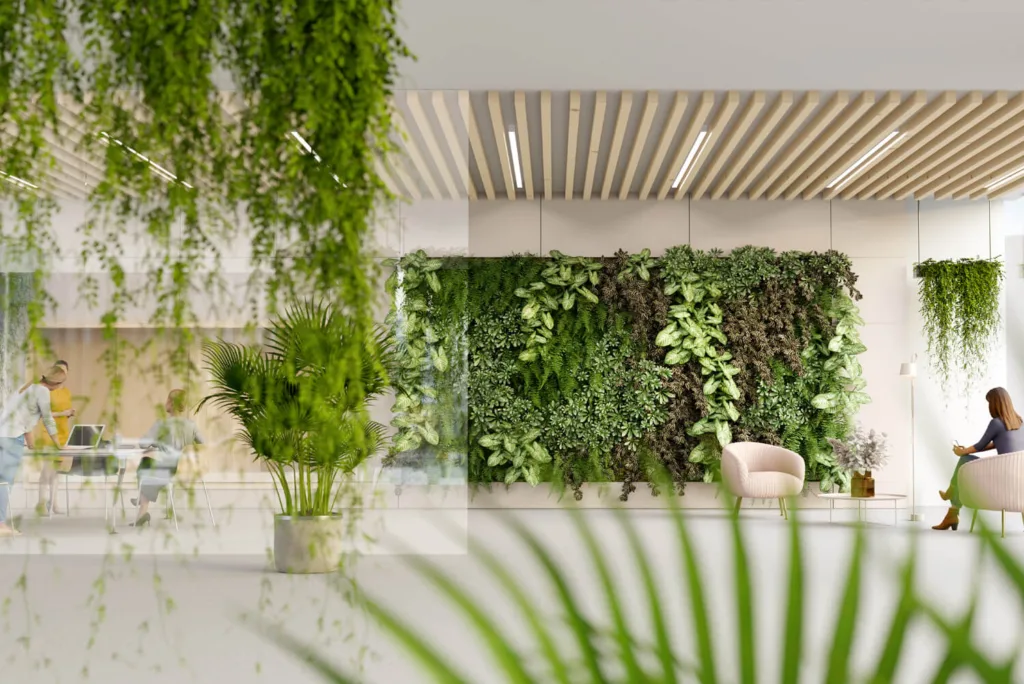A quick Google image search of “CRE tech landscape” turns up some pretty disappointing results, in my humble opinion. Don’t get me wrong, I’m pumped to see various organizations mapping out the tech ecosystem as it relates to commercial real estate, but…
Here are a few CRE tech market landscape maps out there right now, just to give you an idea:
CB Insights

Building Engines

Dealpath

Now, that’s a lot to pore over – a bunch of categories with a lot of logos in each. But, it’s missing an emerging category that is meeting a huge demand in the space.
Tenant Experience Technologies
Now, I know I’m slightly bias, but hear me out. Tenant Experience, which we refer to as TeX, is an emerging CRE tech category that deserves its place on the landscape maps, both for the current role it plays in properties and value it drives for property teams, as well as for the increasing importance that will be placed on this technology, especially as we see convergence on broader functionality in the years to come.
Here’s my suggested addition to this map:

What do you think? Am I missing any big players in the TeX space?
Here are the reasons why I think TeX deserves to be represented on these tech landscapes:
Real estate is becoming a user experience business
Almost all of the tech on these market landscapes are CRE-facing, meaning they only serve the back office for real estate professionals. What about the other 99% of people who actually occupy the physical space? If you look at any of the tech on these market landscape maps, they may interface with tenants occasionally, but all are intrinsically designed to improve the lives of operators through efficiencies and data.
Tenant experience software is designed specifically with the tenant in mind. The end users of the asset are better connected to the property, the neighborhood, and each other through tech-enabled experiences, amenities, and mobile property controls. A glorious byproduct of this improved tenant experience is owner/operator efficiencies and data. When tenants are happy, they’re loyal – and remember: attracting, and especially retaining, a client is the biggest driver of asset value.
Funding in this space is exploding
It seems like every venture capitalist, institutional investor, and real estate company is investing funds in startups and tech companies in this space, or using funds to DIY at their own properties. Tishman Speyer was one of the first companies to take development in-house to create Zo, CBRE launched CBRE360, and other big shops are not far behind. Colliers for instance just launched their Colliers Proptech Accelerator powered by Techstars, placing a specific investment/incubator focus on tenant experience.
Talent wars and custom leasing needs are driving down tenant loyalty
As high-growth TAMI (technology, advertising, media, and innovation) businesses become one of the most desired tenant bases, the market is having to adjust to their unique real estate needs. FIRE (finance, insurance, and real estate) businesses are still known for their long and strong leases, but TAMI businesses are much less reliable for this type of agreement. To put it bluntly, these business have to do just about anything to scale & attract the best talent – and that means moving around from space to space in order to meet their current demands.
Real estate owners and operators have to do a lot more in order to keep these tech tenants happy and loyal. Unemployment is way down, but the need for talent is higher than ever – meaning businesses have to get insanely creative in creating experiences that move the needle for recruitment and retention. Landlords, like many other businesses in other industries, have to adjust to the fact that they’re also a technology company. Tenant experience software becomes the operating system for their property and delivers experiences to tenants in a format they expect – their mobile phone. And tenant satisfaction is just the tip of the iceberg when it comes to ROI, TeX platforms will create value for landlords in so many more ways to drive up property value (think: anonymized data for smarter business decisions).
Coworking and flex providers are setting the tone but taking mostly an analogue approach
It’s obvious that companies like WeWork, Convene, Industrious, Knotel, etc. have changed the game for traditional commercial real estate. We can argue their hype level, their longevity, and their ability to survive a downturn until we turn blue in the face – but the biggest point that’s impossible to argue is how these players have changed the way that landlords AND tenants view workplace experience.
They’ve upped the game and set the bar for impeccable experiences. And while they’ve done an impressive job of swiftly taking over tenant relationships from traditional landlords, they are still very reliant on features and services that are undifferentiated and easy to replicate – cold brew and beer on tap, beautifully designed spaces, premium on-demand event space, and just the best in amenities – all stuff that landlords can do to win back their customers.
But, these players are starting to tackle the tech and software space as a way to drive long-term tenant experience value – i.e. WeWork’s acquisition of office management software Teem as a way to better understand tenant occupancy and leverage data from everyday tenant actions, like conference room booking.
Landlords cannot miss out on this timely opportunity to control their own destiny by creating exceptional experiences through tech and getting smarter via data. Yes, the space is heating up very quickly – that is for certain. The time is now for traditional landlords.
The future of proptech will focus on the occupiers
Now obviously, the next step for those analyzing the landscape is to group the providers into further defined categories. For example, focuses on office, multi-family, retail, mixed-use, or industrial, should be mapped out. And as I mentioned some TeX companies listed on the updated landscape do not take a tech-first approach – they leverage tech mostly to complement their services businesses. Finally, some TeX solutions vary in focus or functionality – for instance, Comfy and CrowdComfort focus mostly on temperature, lighting, room booking, etc. Incredibly important but niche applications as it applies to the overall tenant experience.
It will certainly be interesting to see how the space matures from here –– and just how quickly it will happen. Here’s hoping these CRE tech market landscapes are accurately updated in 2019.
Do you have questions about the TeX technology category? Want to learn more about how our technology fits into the landscape and your tenant experience strategy?
{{cta(‘49922c01-9849-48b1-853e-aea1cfd60eab’,’justifycenter’)}}


